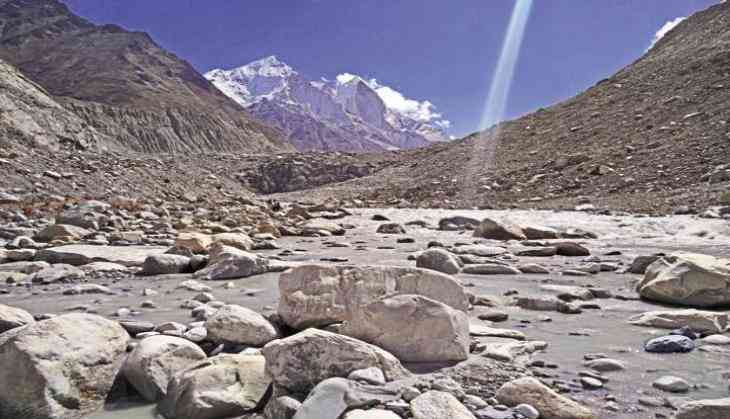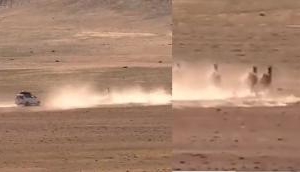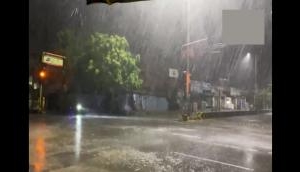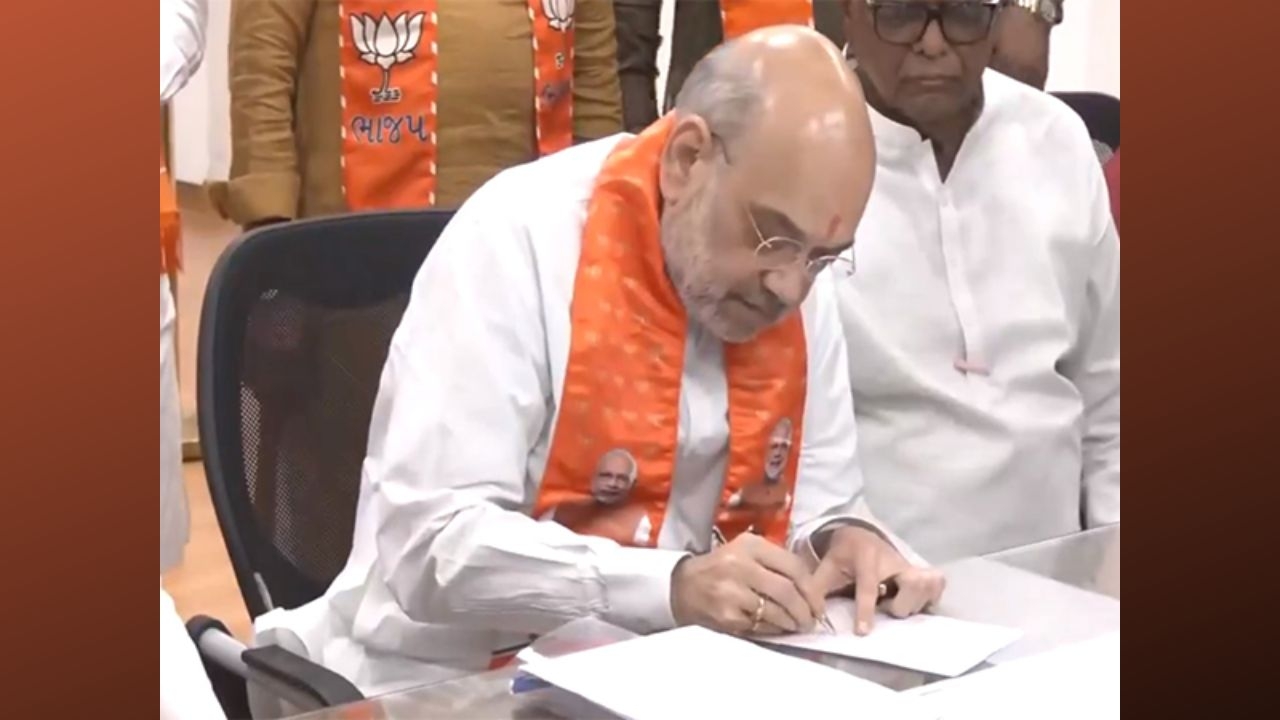Himachal's rivers are ailing. What can be done to make them healthy again

The riverine system in the hill state of Himachal Pradesh has fallen sick. The rivers are in a bad shape faced with burgeoning pollution with sewage, industrial effluents and the absence of water besides bearing the brunt of the climate change. Uncontrolled and irresponsible tourism has added to their woes.
A detailed report 'Dried & Dusted : State of the Rivers – Himachal Pradesh' that has brought out by Himdhara Environment Research and Action Collective presents some glaring facts on the situation that has emerged and calls for immediate policy intervention.
Armed with this report, several action groups have approached the state government to initiate immediate remedial actions. These groups include Him Lok Jagriti Manch, Kinnaur; Jagori Grameen, Kangra; Chamba rediscovered and Saal Ghati Bachao Sangharsh Morcha, Chamba; SUTRA, Solan; Himalaya Bachao Samiti and Himalaya Niti Abhiyan, Chamba; Samgh Foundation, Kullu; Save Lahaul Spiti, Keylong; Spiti Civil Society, Kaza; Jispa Bandh Sangharsh Samiti, Darcha; Lara-Sumata Sangharsh Samiti, Tabo; Hangrang Ghati Sangharsh Samiti, Nako; Satluj Bachao Jiven Bachao Abhiyan Samiti, Rampur; Himdhara Environment Research and Action, Collective and Himachal Van Adhikar Manch.
The report mentions that Himachal, a very small state with a population of around 70 lakhs has only nine per cent urbanisation. The irony is that of the total land geographical area only 10 per cent is under agriculture while 70 per cent is 'Forest land' and yet agriculture is the main source of livelihood with over 93 per cent population dependent on it. As in most mountain areas, agriculture and forest dependence is interwoven as agriculture is possible due to the irrigation from river channels or natural springs. It is the health of the forests that determines the health of the surface and ground water systems which in turn determines the viability of agriculture and horticulture.
It has been underlined that while the government pushed up horticulture and cash-based agriculture till eighties, the subsequent decades saw he advent of neo liberal era, though on a slow pace, that led to a massive push in tourism and hydro power sector. Himachal has the largest hydro power installed capacity in the country - more than 10000 Mega Watt (MW) out of a total potential of more
than 27000 MW.
This 'development' has brought about threats to the riverine health in the state. The system is facing an onslaught on five counts –- hydro power development, urbanisation and tourism, sand mining, flood and climatic changes along with industrial pollution.
It is in this context that Himdhara and other the social organisations have submitted a memorandum to the state government raising a series of demands. They have pointed that the developmental activities are being carried out in the absence of proper planning, impact assessment and carrying capacity studies besides monitoring by the environment regulatory agencies of the state.
The memorandum states, “We believe that until and unless a larger policy change occurs there is little hope to save the Himalayan rivers.”
The first demand is to declare wild, free flowing rivers. The have asserted that of the major rivers it is now the Chenab and Satluj in Upper Kinnaur as well as Spiti that remain free flowing. Given that these are high altitude regions and are ecologically fragile and more at risk due to climatic variations, these should also be declared as 'Eco sensitive zones' and no-go for major construction activity. On Yamuna, Tons and Giri that are important life lines of the local community and the only non polluted sections of the river basin upstream these need to be conserved as well given the impending threat of two large dams (Renuka and Kishau) in this region. In fact a review of the Upper Yamuna Basin Agreement is warranted given that five states are involved and a Cauvery like situation would mean increasing tensions amongst the riparian states and communities.
Calling for protection of small streams and tributaries, the memorandum says, “ Some of the smaller streams and tributaries of the major river basins need to be marked for their fragility not just from a single viewpoint but given that they support ecological diversity and livelihoods. The Tirthan is a brilliant example of this. Thriving fish farms on the river, small home based eco tourism initiatives and cultural preservation all becomes possible in such an environment. Similarly some of the other streams on Ravi - like the Hul streams in the Saal valley which also feed into the drinking water needs of the valley as well as Chamba town, needs to be declared as a no-go zone not just for hydro projects but also for large scale sand mining, polluting industries and unplanned construction of both roads and buildings. A list of such streams and tributaries on each of the rivers needs to be drawn up.”
The activists have demanded that Cumulative Impact Assessment (CIA) studies for hydro power projects be made mandatory in an independent, thorough and mulch-disciplinary fashion. The activists say that these studies have become a mere formality as the process of giving environment and forest clearances for hydro projects has been de-linked from the Cumulative Environmental Impact Assessment (CEIA) process. Environmental groups have been demanding that until the complete studies are carried out there must be a moratorium on further hydro development in Himachal
The government has been asked to initiate strict actions on illegal sand mining. It has been pointed that if the orders of the National Green Tribunal (NGT) and Himachal Pradesh High Court are strictly implemented and the mining is regulated or even stopped in the streams and rivers, the revival would take place in a short period of time.
The memorandum further seeks controlled and regulated construction. “Tourism and urbanisation need serious policy measures that strengthen the role of regulatory agencies as well as work towards models that are not large and commercial in nature but small scale and community owned and managed. Urban bodies as well as Panchayats need to involve community representatives in development plans where health of the river is placed as the central concern. Four-laning projects and blind road widening are not just damaging the forests but also increasing erosion and the siltation on our rivers. These need to be reviewed thoroughly,” it reads.
The activists have further demanded that violators dumping industrial effluents in rivers be taken to task. They have underlined that special attention needs to be paid to monitoring and regulation of industrial pollution in areas like Baddi-Barotiwala-Nalagarh and Paonta Sahib. Besides, the Himachal Pollution Control Board needs to be well staffed and held accountable.
The activists have highlighted the need for involving the local community in river protection, regulation.
A concern has also been raised on monitoring discharge and environmental flows. “In the context of e-flows when main rivers have been plugged with projects, there is a need to do following: Where there are cascade of projects the projects they should discharge sufficient amount of water and all the small streams joining the river should be kept free of projects so that fish can migrate in these small for streams for spawning,” the memorandum says.
In addition to this the need to protect rivers and forests together has been emphasized upon. It has been stated, “Rivers will be under threat if the entire ecosystem is not protected. This also means working harder to protect the biodiversity and quality of our forests. Increasing deforestation by diversion of forests for large development projects is a huge threat.”
The activists have demanded that the government plan an action plan for all the rivers after carrying out regional consultations involving local community representatives, citizens groups, environmentalists and experts along with chosen government departments.






_251021_300x172.jpg)
![BJP's Kapil Mishra recreates Shankar Mahadevan’s ‘Breathless’ song to highlight Delhi pollution [WATCH] BJP's Kapil Mishra recreates Shankar Mahadevan’s ‘Breathless’ song to highlight Delhi pollution [WATCH]](http://images.catchnews.com/upload/2022/11/03/kapil-mishra_240884_300x172.png)

![Anupam Kher shares pictures of his toned body on 67th birthday [MUST SEE] Anupam Kher shares pictures of his toned body on 67th birthday [MUST SEE]](http://images.catchnews.com/upload/2022/03/07/Anupam_kher_231145_300x172.jpg)






